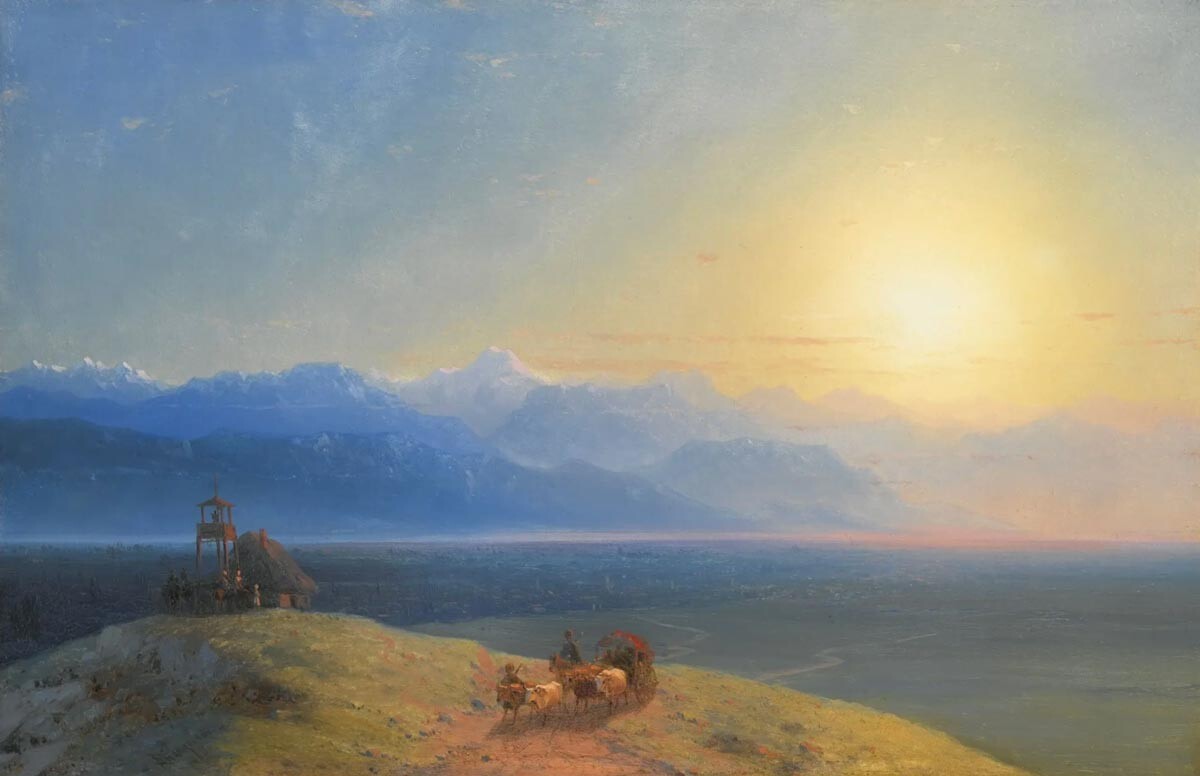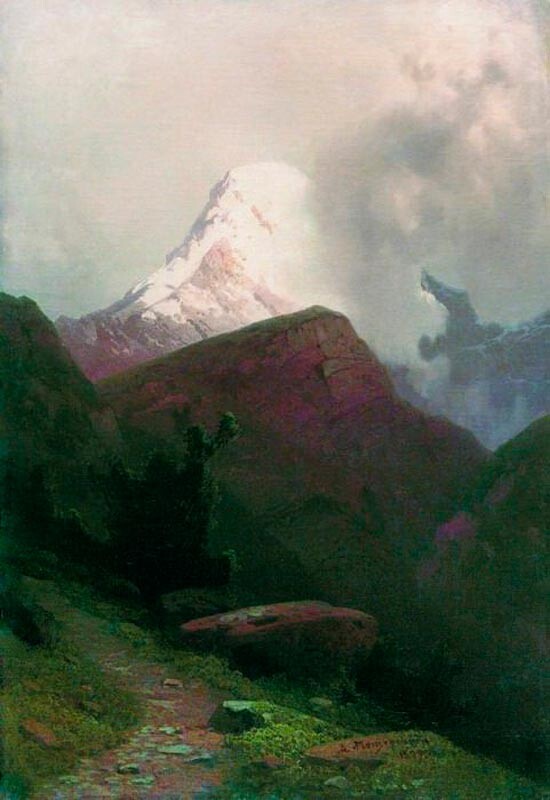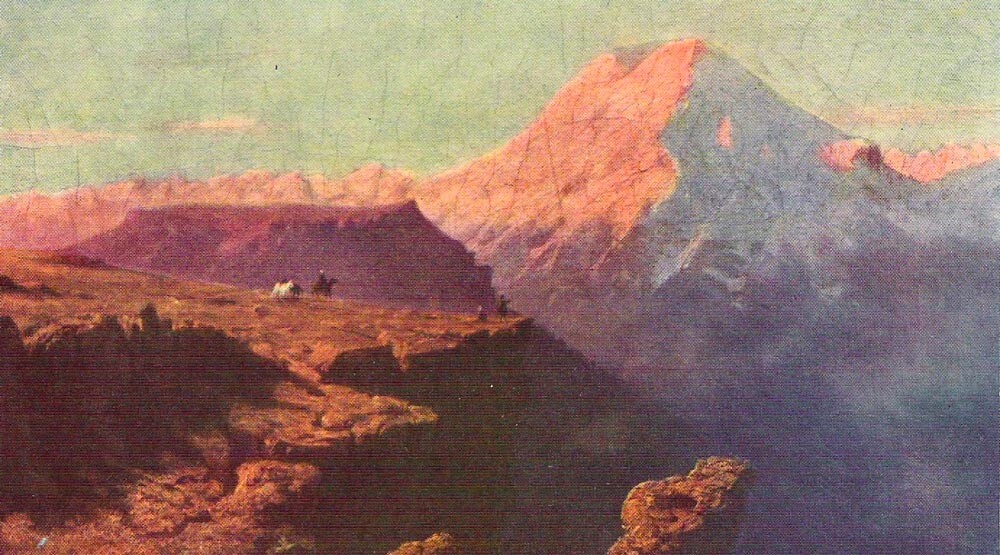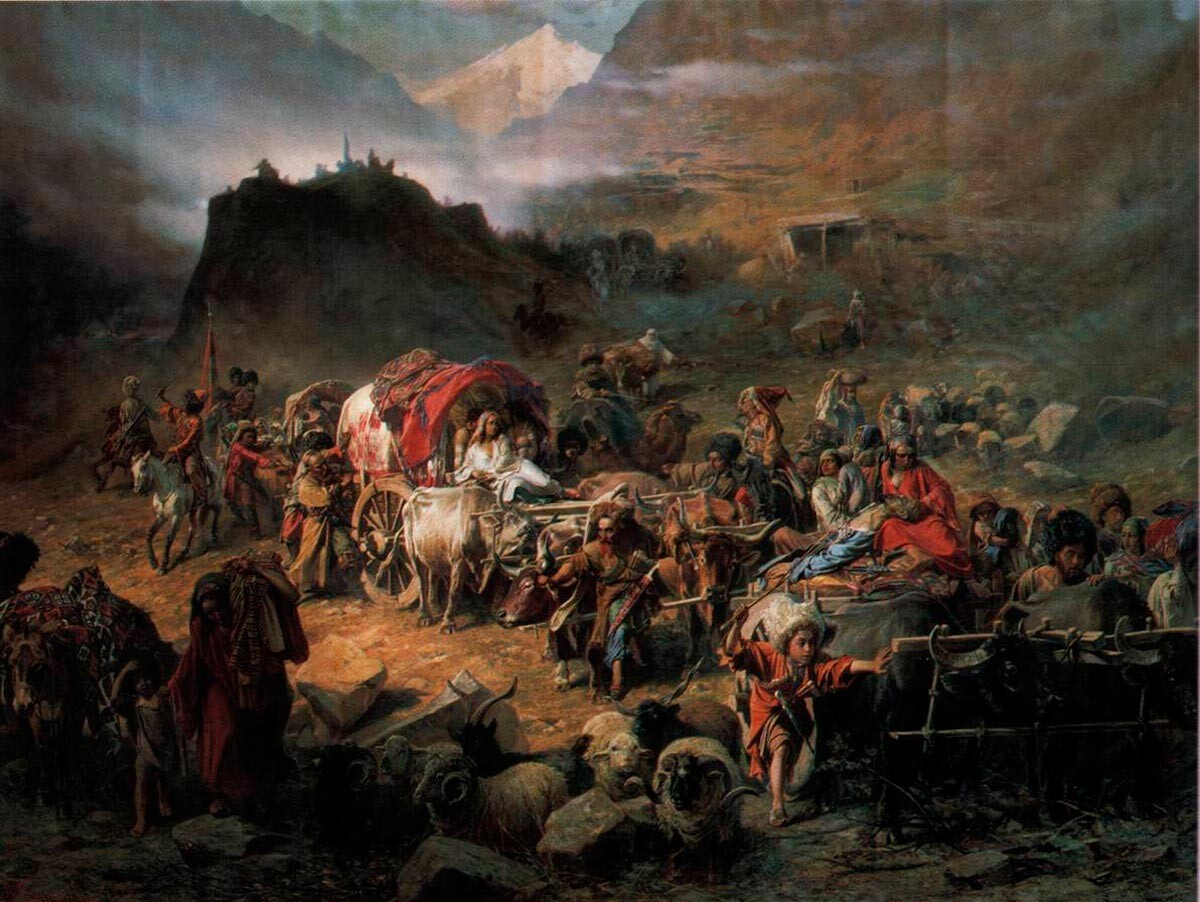The Russian Caucasus in the paintings of artists

“Snowy peaks and glaciers, sometimes lost in the moving masses of clouds, sometimes dazzlingly shining in the blue of the sky, gorges, precipices, cliffs illuminated by the bloody glow of sunset, steppe foothills like giant frozen waves overgrown with azaleas,” wrote famous Russian artist Apollinariy Vasnetsov about the North Caucasus.
His colleague Boris Kustodiev also shared his impressions of the Caucasus Mountains: “When you reach the river, in the distance [you can see] mountains with white snakes on their tops - it’s snow; below - a continuous forest of plane trees, oaks with bushes of red rhododendron and azaleas scenting up to a headache, below - streams are running along the bottom of multicolored stones…”
The Russians arrived in the Caucasus at the beginning of the 18th century and had to defend their right to this land for the next two centuries in numerous wars against the Ottoman Empire and Iran. In addition, local tribes who sometimes managed to form powerful coalitions and put forward strong leaders such as, for example, Imam Shamil, leader of the so-called North Caucasian Imamate, also resisted.
The war against the highlanders of the North Caucasus lasted for almost half a century and generally ended in the mid-1860s. Often, artists were sent to the location of the Russian troops to depict not only the beautiful nature of the region, but also those cruel and fateful events in their paintings.
 View of the Caucasus with Kazbek in the distance, 1868 г.
View of the Caucasus with Kazbek in the distance, 1868 г.
 Cossacks at a mountain river, 1892.
Cossacks at a mountain river, 1892.
 Darial Gorge, 1890s.
Darial Gorge, 1890s.
 Mount Kazbek, 1897-1898.
Mount Kazbek, 1897-1898.
 A Forest in the mountains, 1890s.
A Forest in the mountains, 1890s.
 Summer camp of the Nizhny Novgorod Dragoon Regiment at Kara-Agach, 1840.
Summer camp of the Nizhny Novgorod Dragoon Regiment at Kara-Agach, 1840.
 In the Caucasus Mountains, 1879.
In the Caucasus Mountains, 1879.
 A Caucasian horseman, 1800s.
A Caucasian horseman, 1800s.
 Harvesting grain in the North Caucasus, 1840s.
Harvesting grain in the North Caucasus, 1840s.
 The Mountain Path. 1887 г.
The Mountain Path. 1887 г.
 In the Mountains of the Caucasus, 1906.
In the Mountains of the Caucasus, 1906.
 The battle between the Russian troops and the Circassians at Akhatl on May 8, 1841, 1841-1842.
The battle between the Russian troops and the Circassians at Akhatl on May 8, 1841, 1841-1842.
 Pyatigorsk, 1837-1838.
Pyatigorsk, 1837-1838.
 Mountain Lake, 1852.
Mountain Lake, 1852.
 The Assault on the Akhty Fortification, 1860s.
The Assault on the Akhty Fortification, 1860s.
 Near the shores of the Caucasus, 1885.
Near the shores of the Caucasus, 1885.
 Frosty Morning, 1880s.
Frosty Morning, 1880s.
 A Caucasian view. Mount Elbrus at sunrise. 1837-1838.
A Caucasian view. Mount Elbrus at sunrise. 1837-1838.
 General Kluge von Klugenau’s meeting with Shamil in 1837, 1849.
General Kluge von Klugenau’s meeting with Shamil in 1837, 1849.
 View of Gunib, 1859.
View of Gunib, 1859.
 A Caucasian still life, 1918.
A Caucasian still life, 1918.
 Rural Caucasian scene, 1850s.
Rural Caucasian scene, 1850s.
 Chains of the Caucasus Mountains. View from the Karanai Mountains to Temir-Khan-Shura on the Caspian Sea, 1869.
Chains of the Caucasus Mountains. View from the Karanai Mountains to Temir-Khan-Shura on the Caspian Sea, 1869.
 In the Caucasus. The Sitting Highlanders, 1889.
In the Caucasus. The Sitting Highlanders, 1889.
 Storming the fortifications of Gunib, 1867.
Storming the fortifications of Gunib, 1867.
 Abandonment of an aul by highlanders at the approach of Russian troops, 1872.
Abandonment of an aul by highlanders at the approach of Russian troops, 1872.
 The Caucasus Gorge, 1893.
The Caucasus Gorge, 1893.
 The Darial Gorge on a moonlit night, 1868.
The Darial Gorge on a moonlit night, 1868.
 The Old Men, 1988.
The Old Men, 1988.

